
JBFloyd
-
Posts
1,242 -
Joined
-
Last visited
-
Days Won
1
Content Type
Profiles
Forums
Blogs
Gallery
Events
Store
Posts posted by JBFloyd
-
-
The design is that used by L'Union St.Jean-Baptiste d'Amerique, a fraternal and mutual-aid group of French Catholics in the United States. The group was founded in 1900 and apparently still exists and is headquartered in Woonsockett, Rhode Island.
0 -
This came in today from the curator of the regimental museum:
"The medal is called the "Hands Across the Sea Medal". It was given to the wives of servicemen who got together during World War I to send presents to regimental soldiers at the front. Some knitted gloves, some just sent presents. It is an unofficial medal issued by the regiment...The ribbon is made in the regimental colours of the Royal Scots Greys".
So, now we know.
0 -
The heart-shaped design is not one I commonly associate with military awards (other than some wound medals). I associate that design more with fraternal organizations (e.g., Odd Fellows, etc), but I would expect more lodge symbols to be included in the design. I wonder if there were various fraternal lodges connected with the regiment.
0 -
Can anyone tell me anything beyond the obvious (i.e., that's it's unofficial) about this Royal Scots Greys medal? The reverse is blank except for silver marks and a maker's mark "Wilson & Sharp/Edinburgh"
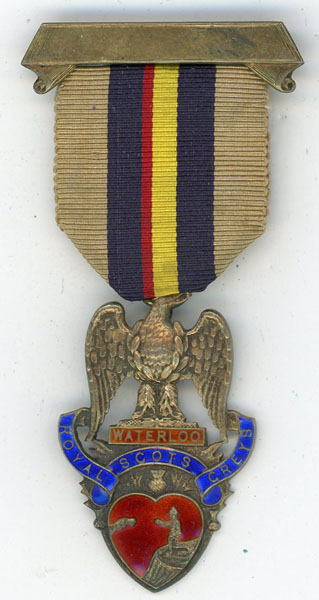 0
0 -
Not Egyptian, but the Indian state of Bahawalpur's Military General Service Medal.
0 -
They are likely to be marked "Coro", if marked at all. Coro was a major American manufacturer of costume jewelry in the 1940-50s. During World War II, they had numerous contracts for insignia and some medals. In the 1950s, there was a period in women's fashion where military-inspired jewelry was hot. Coro simply retooled many of its dies and put together brooches, pins, etc made up of parts that insignia collectors will recognize. In many cases, they used the same dies, but used different colors from the originals, so a red-white-blue US shield might become green-yellow-white. Japanese breast star designs were commonly used for some reason -- probably because they were simple, elegant design elements.
There's a thread on the OMSA web site about Coro's Heraldic Line, which used many non-US designs: http://www.omsa.org/forum/viewtopic.php?f=22&t=1276
0 -
A genuine "El Oro" strike.
0 -
Payne's book is a classic in the British medal collecting field, but the damage is substantial for book collectors. Also, the book was reprinted in the UK in 1981, so most collectors interested already have a copy. A damaged original should bring about what a VF condition reprint brings -- $35-50.
0 -
They had a fearsome combat reputation.
0 -
It's real, although you should be able to find a cleaner example without too much trouble.
0 -
Many thanks for the information. I have never seen the medal before, so any help is great.
Regards,
Jeff Floyd
0 -
The language appears to be Serbian (which I don't read), but what is it. From the context, I'd say church-related, but... It is in silver with quality enamel.
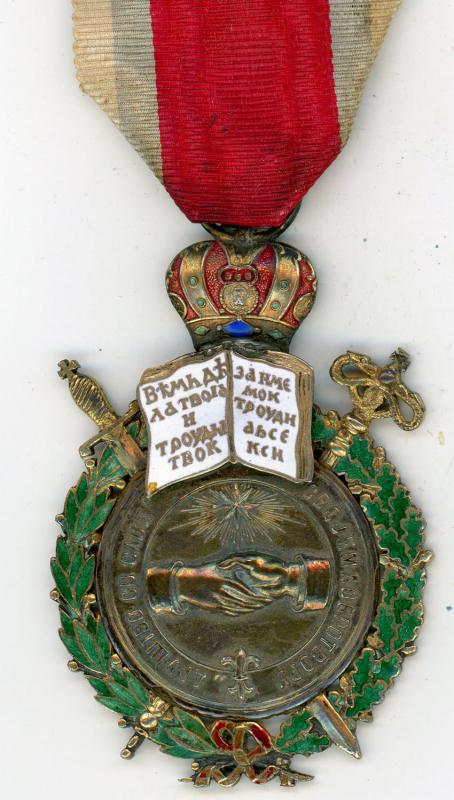
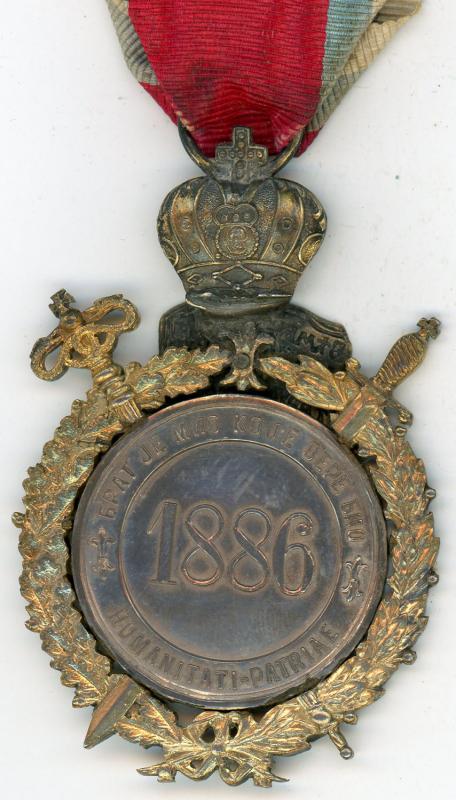 0
0 -
It's Ukrainian, but that's all I know about. It doesn't appear in any print or elctronic source I can find. What is it?
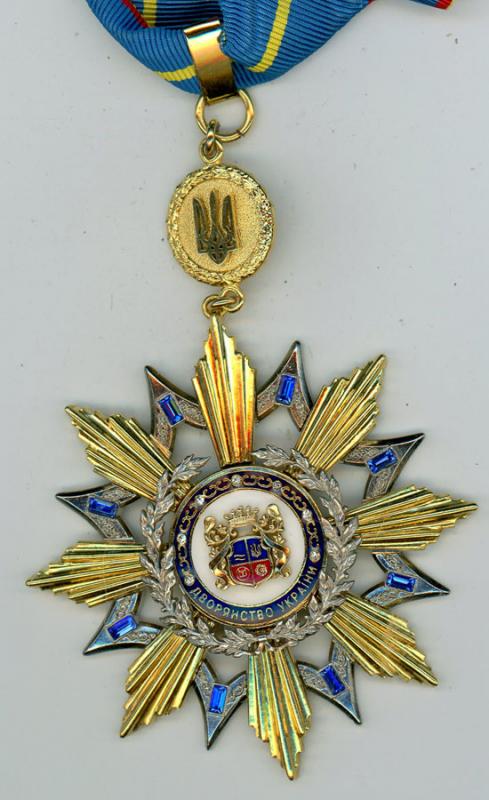 0
0 -
Following an Austrian ribbon, perhaps the Hungarian Order of St. Stephen, although the green stripes are a little narrow.
0 -
Shipping for the book is US$5.00 within the US. The library estimates that international shipping will cost US$50 because the book weighs over 4 pounds. I can provide the contact info if anyone needs it.
0 -
The Princeton University Library is hosting an exhibit of a major collection of Latin American orders, decorations and medals. The collection was formed by Robert L. Ross, a collector with a long association with Latin America.
The university has set up an excellent web site about the exhibition, with numerous illustrations. See: http://rbsc.princeton.edu/thankful-nation/
There is also a fully illustrated vcatalog of the exhibition for sale (details on the web site). This will be the first source in English on Latin American awards since Gillingham's 1932 monograph for the American Numismatic Society. The 900+ illustrations will be worth the cost of the catalog.
0 -
FAA 204 was an artillery observation squadron formed in mid-1916. Not much information around on the unit.
0 -
Uwe,
Many thanks. I had never heard of Schlaraffia, so I learned something new.
Jeff Floyd
0 -
By the structure and colors, I believe this to be a German (Bavarian) Masonic badge of some sort. It's Poellath marked. Does anyone have any more info?
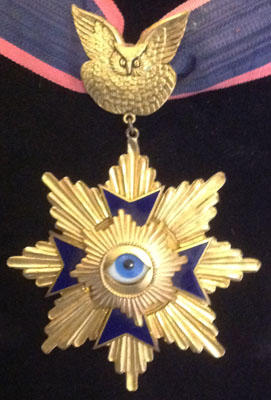 0
0 -
I find Dimitri Romanov's book, "Orders, Medals and History of Imperial; Russia", published in Copenhagen in 2000, to be very useful. Good images, English text, although not heavy on technical detail. It can be expensive in the secondary book market, but it was published at $95, as I recall.
0 -
Badge of the 4th Air Force Regiment.
0 -
It's meant to be a service medal rather than a victory medal. These are rather cheaply made, but as issued.
The Thais take great pride in never having been occupied, so the presence of the Japanese in World War II presents some semantic problems for them. Officially, the Thai government permitted the Japanese access through Thailand to move troops to Malaya and Burma. Throughout the war, Thailand retained control of its government and armed forces, although with obvious Japanese guidance. Ultimately, Thailand did declare war on the Allies (although the declaration was never delivered to the United States), but never really added much to the Japanese cause. The declaration of war was ruled to be unconstitutional and therefore void, so Thailand never had to surrender. As Paul notes, there was a real resistance movement, which provided intelligence to the Allies, and did some sabotage, but mostly tied down a number of Japanese troops.
0 -
Agree. Do not waste your money!
0 -
The shield in the center roughly equates to the Cuban arms, but the details don't match. The pin is more like those seen on costume jewelry from the 1950s, with a "military" motif. Cuban orders of this period were generally made by Vilardebo y Riera of Havana, and the quality of their work matched almost any manufacturer in Europe.
0


Bavarian officer research help
in Germany: Imperial: Rick (Research) Lundstrom Forum for Documentation and Photographs
Posted · Edited by JBFloyd
I'm trying to pin down the wartime (WWI) awards of Wendt Arthur Alexander Edmund Karl Rudolf Ernst Franz Oscar, Freiherr von und zu Thungen (born March 1870).
I know he served mostly in Belgium (Charleroi and Hasselt) and received an Iron Cross, second class. Later on, he received the Ehrenritter grade of the Johanniter Order. However, I'm drawing a blank on his wartime awards.
His pre-war awards include a Spanish Order of Carlos III and a Swedish Order of the Sword. The Spanish award dates from service in the Germany Embassy in Madrid and the Swedish award apparently was from a Swedish royal visit to Munich.
Can anyone fill in the blanks, please?